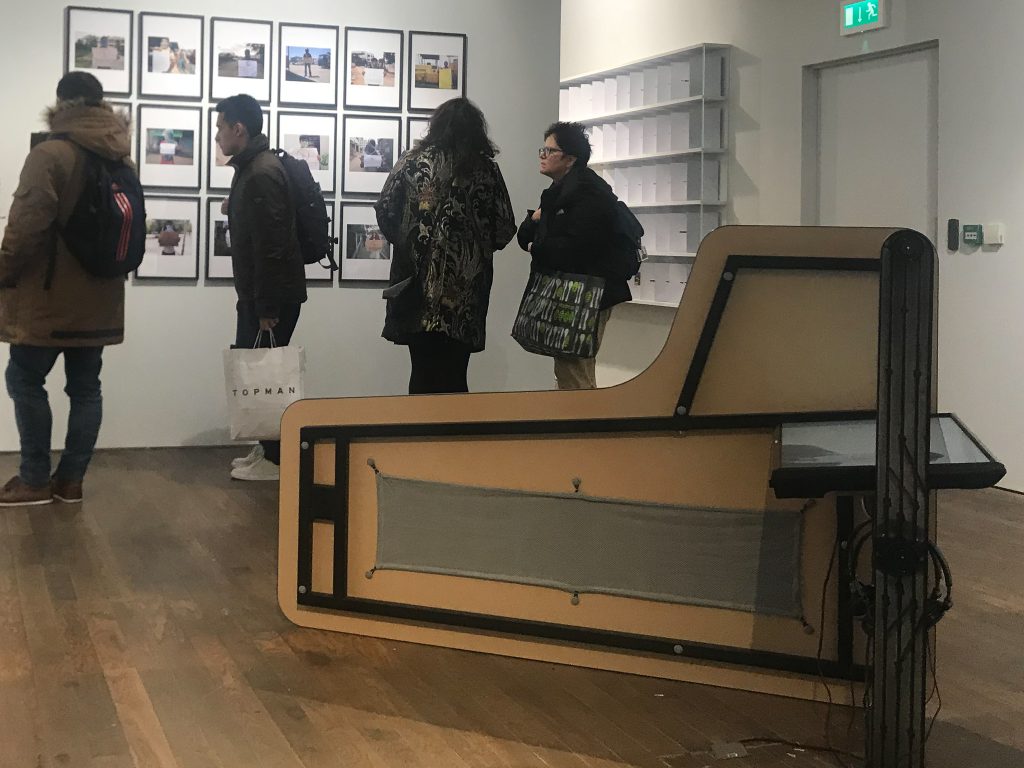The Photographers’ Gallery, London, Saturday 24th November 2018.
A collaboration between The Photographers’ Gallery, Centre for Photography and Visual Culture, University of Sussex and The Centre for the Study of the Networked Image, London South Bank University.
After diving into the sea of photography and having to learn to swim fast, I now wash up on (relatively) dry land. With the familiar scent of Bataille, Baudrillard and Kristeva, and even, in the afternoon, the terra firma of the relative autonomy of the field of cultural production and Bourdieu’s three forms of capital. This one day conference was organised to complement one of the current exhibitions at the gallery, All I know is What’s on the Internet. Lots of notes, but for the CRJ I’ll just pull out a few points relevant to the development of my project and practice (and the current module).

Nina Power (Roehampton) traced a path through contemporary theory in relation to seeing and de-capitialism (preferred by her to the problematic term post-capitalism, which to some invokes a form of hyper-capitalism). Some familiar ground, but also plenty to follow-up (Aria Dean’s ‘Closing the Loop‘, Franco Berandi’s notions of necro-capitalism, Josef Leo Koener’s idea of enemy-painting). She proposes the practice of enemy-photography, but it was difficult to put substance on this and trace through what this might mean for photographic practice. The triple loop of representation warrants some thought (that photography represents, represents representation and represents the representation of representation). The point raised from the floor that she had conflated seeing with photography (particularly in the discussion of Kristeva and The Severed Head in discussion of engagement with images on the internet) seemed a fair one, and was perhaps the root of the difficulty, as a photographer, of relating this to image making (beyond raising a range of important critical issues, to which it will be productive to return as practice, and associated critical commentary, develops).
Martin Zellinger (Anglia Ruskin) provided a critique of Kodak’s attempts to financialise and produce artificial scarcity of images in the age of proliferation through blockchain technology. An issue that is raised here is the assumption that all images are assets with financial value, and therefore prey to aspirations for corporate control. The commodification of the image was addressed by others also. Kuba Szreder, in the afternoon, makes the point (drawing on Bourdieu’s notion of the relative autonomy of the field of cultural production) that not all images and image making can be seen as directly a part of economic production and circulation. Interesting that Szreder uses the Company Drinks in Barking as a prime example of alternative forms of organisation in the arts (and worth following in up relation to my work with Thames Ward Community Project).
Ben Burbridge (Sussex) addressed the corporate take over of public galleries in the face of decreased and constrained public funding and the impact of the new managerialism on galleries and academic institutions. Very familiar ground. Emily Rosamond’s (Goldsmiths) analysis of contemporary art and investment started to open up possible tactical and strategic responses, and the importance of understanding photography’s normative performativity and the attempt by investors to manage volatility and parse out uncertainty. References to follow up in a future post: Hito Steyerl (In Defense of the Poor Image, 2009), Paul Frosh (2015, The Gestural Image, IJ Communication, 9, 1608) and the ideal of kinaesthetic sociability, Michael Feher (2018, Rated Agency: Investee Politics in a Speculative Age), Petra Cortright (2007, VVEBCAM; 20167 i thot i wiz free), Femke Herregraven (2014, Volatility Storms), Jodi Dean (2017, Crowds and Party). Also questions around what it is to be a photographer in the age of de-professionalisation and uberization, new forms of alliance and ‘data artists’ (as a supplement to data scientists).
Harry Sanderson explored the demand for hi-res images, Rowan Lear photography as feminised labour, touch, gesture and finger work, Constant Dullaart on his social media manipulation work, Szreder on post-capitalist art worlds (and alternative organisation) and Mike Cook on Stocksy (making the point that co-operatives have to be founded on sustainable business models).
The major benefit for the development of my own work is to be able to position what I do more effectively and start to relate contemporary photographic practice to wider social, cultural and political theory. Two more events next year on this theme. For this module, the symposium has opened up an alternative, critical domain for the image making, and alternative (radical and oppositional) forms of organisation for the production and circulation of images.
